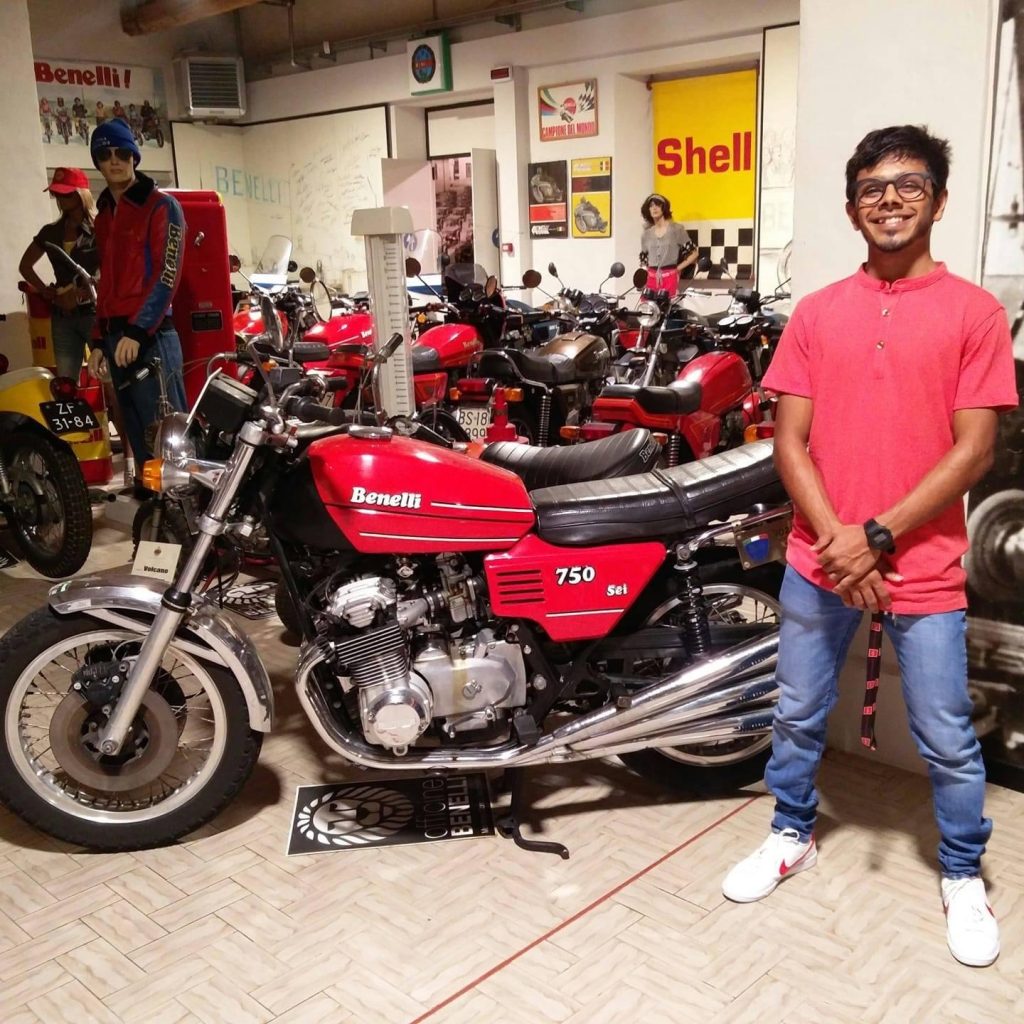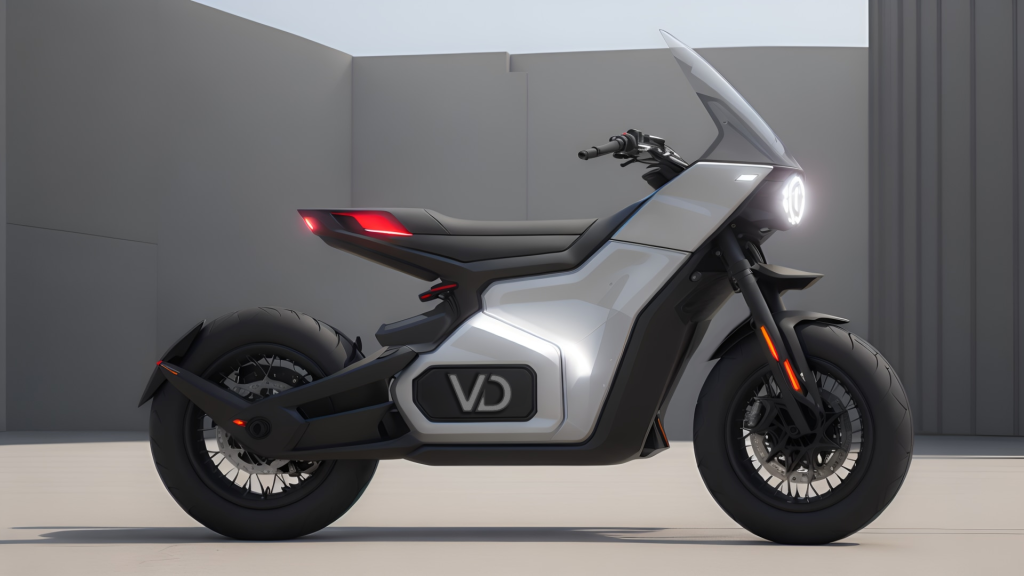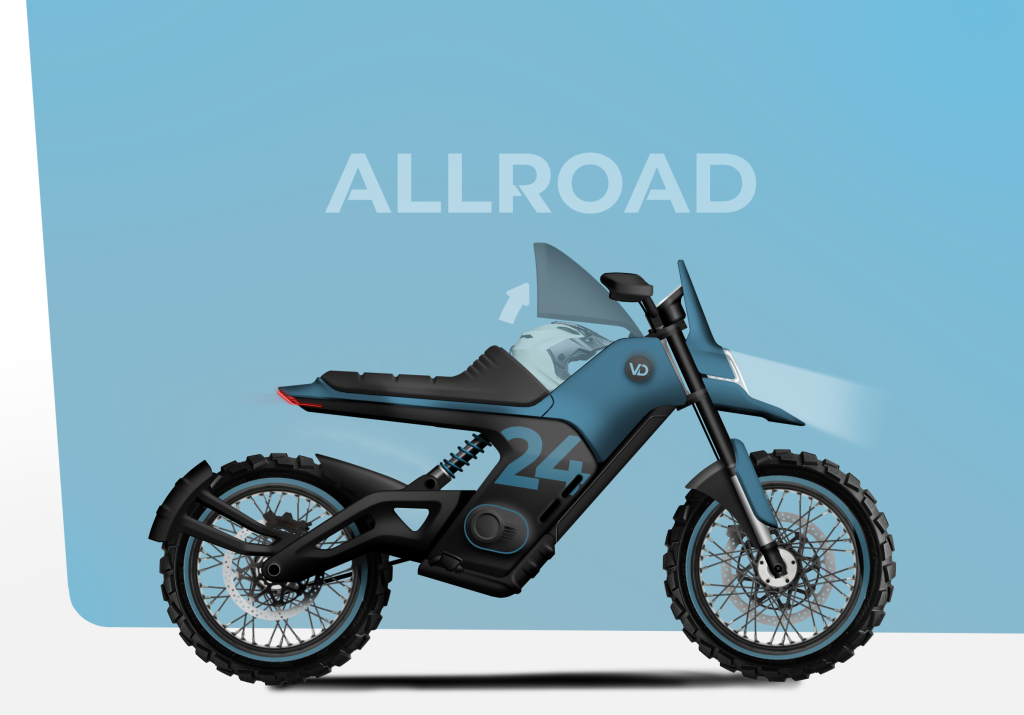VROEGH Design is a multifunctional new mobility agency that covers design, engineering and consultancy.
So far it has developed more than 50 new mobility vehicles across the entire spectrum, from e-bikes, e-cargo bikes and e-scooters, to skateboards and other light electric vehicles for renowned brands worldwide.
Active in 19 countries globally, VROEGH exists to help mobility brands design and engineer vehicles for their specific use case, target group and demographic.
Right now the vehicle of the moment is the e-motorcycle of which the agency has a full range in its portfolio. These are all based on the same electrical platform but feature different aesthetics depending on the requirements of the customer.
Increasing the focus on e-motorcycles is understandable given the sector’s rapid growth. According to Statista, the global market for e-motorcycles is worth just under $46 billion and is forecasted to hit $110 billion by 2030.
Meanwhile, the five biggest countries in Europe saw an 80% rise in e-motorbike sales between 2021 and 2022, with that number reaching above 200% in France and Germany.
Passion drives innovation
The agency’s success is driven by its employees’ passion for manufacturing vehicles that revolutionise the way people travel. Vroegh himself is a former recumbent cycling world champion who started designing bikes at the age of 15 and retains a love for finding solutions to new mobility challenges.
Such passion is certainly evident in senior project manager Kars Rotteveel and designer Gaurav Savla, both of whom have been involved in the agency’s growing focus on e-motorcycles in addition to their complete portfolio of e-bike designs.
Rotteveel began working on bicycles aged 16 and had been employed by a Dutch e-bike manufacturer until taking up his role with VROEGH. Salva joined after having worked as a motorbike designer for Italian firm BENELLI for the past five years.
“I ride my motorbike every day to work and back as it provides so much freedom,” Rotteveel says.
“When I am in the car, I am preoccupied with other things, but on my bike I just think about the road. I also want to create a liveable world for my kids and changing mobility is a big part of that.”
In explaining his personal motivation, Savla cites the old saying: “Four wheels move the body, two wheels move the soul.
“Motorcycles have been my bread and butter for the past six years and I love designing them,” he adds.

Savla believes two-wheelers are better suited to urban mobility from both a design and user perspective: “They allow the user to be more involved in the process of travelling from A to B and are also more inclusive with the environment.
“The shift to e-motorbikes can be put down to convenience and reliability,” Savla concludes.
Rotteveel says that the rapid growth of the sector has resulted in lots of innovation in the electric mobility space, with the development of speed bikes, hyperbikes and e-motorbikes.
However, he believes there is still an opportunity to create a vehicle that is larger than an e-moped but less powerful than a full scale motorcycle, sitting at (the equivalent ICE) around 125cc (or A1 EU license).
“I believe that is the sweet spot to fit within the current needs of our urban environment.”
Developing new products
VROEGH Design’s approach to developing a new vehicle takes place over a series of phases which starts with market analysis. This involves looking at other brands, their aesthetics and potential evolution, and especially the user.
“We create a user story which helps us understand the challenges they face,” Rotteveel says.
“We ask how they move about and what they need to make their life easier from a mobility perspective.”
This process allows the design team to understand the purpose of a new concept, and to consider each development aspect with a clear end goal in mind. For Savla, the design process then begins, a task that involves getting client approval and adjusting accordingly based on their needs.
“Even if the designer loves what they have made, they need to fit it to what the client wants,” he says.
“We also need to be thinking about the future as the development phase takes four or five years. This includes looking at cost, functionality and aesthetics.”

Following the completion of the discovery and design phase, they enter the engineering phase, which involves 3D printing the design and making sure each component is producible.
“We divide our engineering phase in various sample rounds. We start with an A-sample, which can be built up with off-the-shelf frame components in order to fully confirm the functionality. The B-sample will be made with prototype methods, but the aesthetics will already be comparable to the final product. The C-sample is made with ‘First-out-of-Tool’ components, and the D-sample can be considered the ‘0-serie’. After each round we implement changes to ensure a smooth product launch,” explains Rotteveel.
“After this, the model can go into mass production. This process can be performed by the client and their level of expertise, but we can offer as much or as little support as required.”

Maximising accessibility
While the new mobility industry’s growth has seen the development of vehicles of all sizes and capabilities, designing products that are accessible to all remains a core focus for VROEGH. The agency produces a wide range of sustainable transport solutions by harnessing its design and engineering capacity, and ensuring that it understands the needs of users and the areas they live in.
“An e-scooter is a very efficient way to get around a city, but it cannot be ridden on a highway,” says Rotteveel.
“There are various governmental incentives in order to make the transition from the car. With your B-driver’s licence you automatically receive a A1 (125cc) license in around five European countries, while in even more countries the required test in order to qualify for a A1 licence have been simplified, so there are far fewer barriers.
“From a design perspective we can modulate certain vehicle types and create vehicles that appeal to different people based on their age or what they need it for. We have a stable platform that we can fit with different features or components. This is the right approach as we move forward.”
Rotteveel concludes: “E-bike makers should focus on making their products safer and sturdier, while e-motorbike manufacturers can make their products smaller, lighter and more efficient. This evolution will continue in the upcoming years and the e-bike and e-motorbike developers will merge more and more into one big market segment.”
